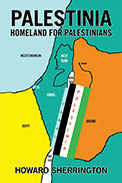
 |
In this insightful book, readers gain an understanding of the complex history between Palestine and Israel. Readers also learn about the policies and political actions which have undermined Palestinian identity and communities. While exploring the internal socio-political mechanisms that currently shape the region, the book highlights the role of countries like Lebanon and Jordan in the region’s stability and socio-economic importance. The book also focuses on how various global leaders, including four United States presidents, have attempted to resolve the conflict. The author also highlights other contributing geographic and economic factors, such as “The Jordan Water Problem.” In the appendix, readers find ways that they can help to make a peace plan work, and it provides useful statistics about Palestinians and Palestine that supporters can use.
This book is a helpful guide for anyone attempting to understand the current conflict between Palestine and Israel. Interestingly enough, it focuses on the role of countries like Jordan and Egypt, which have little to no oil and rely on Israel for trade. The book poses intriguing solutions, such as giving Palestinians access to Egyptian citizenship, and explores the ramifications of these solutions. If readers choose to use this book as a teaching tool, it helpfully includes a chapter in which each chapter is converted to PowerPoint slide format, and the information is broken down into easily understandable points. The maps and illustrations facilitate the text’s educational role. This book has the potential to become an important teaching and learning tool, especially in regard to its dissection of Sherrington’s own proposed plan to resolve the region’s conflicts.